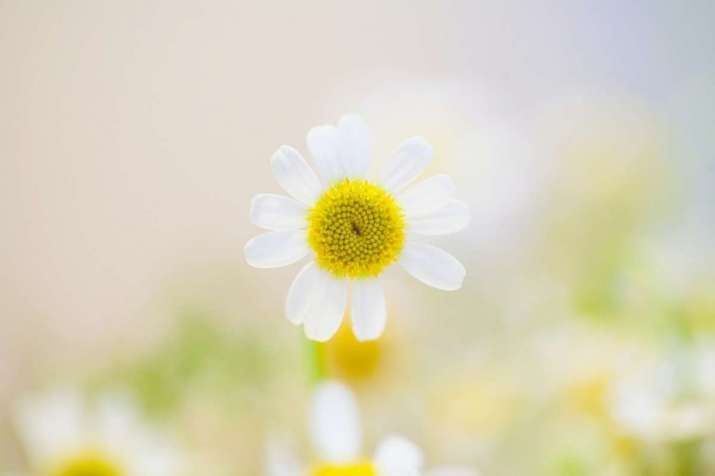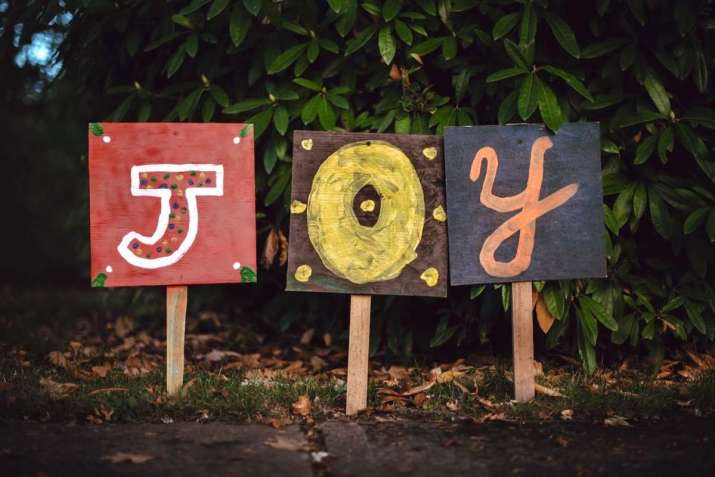FEATURES|COLUMNS|Bringing Mindfulness to Life
Joy and Happiness
 Photo by Maria Shanina
Photo by Maria ShaninaThe same stream of life that runs through my veins night and day
runs through the world and dances in rhythmic measures.
It is the same life that shoots in joy through the dust of the earth
in numberless blades of grass
and breaks into tumultuous waves of leaves and flowers.
It is the same life that is rocked in the ocean-cradle of birth
and of death, in ebb and in flow.
I feel my limbs are made glorious by the touch of this world of life.
And my pride is from the life-throb of ages dancing in my blood this moment.
“Stream of Life” by Rabindranath Tagore
I’ve pulled this poem out of my mindfulness poetry folder a few times recently, weighing up whether or not to use it for some online day retreat or meditation practice session. Each time I’ve put it back, thinking it’s a bit over the top, inappropriately exuberant for these dark and troubled COVID times, too much of a contrast. People may take offense. Who wants to hear about limbs being “made glorious” when there is rising unemployment and depression—not to speak of death rates, both directly COVID-related and as a result of postponed or canceled operations for other conditions—and when the UK’s current economic slump is as low as it was during the Great Frost of 1708–9?
For similar reasons, I’ve been holding back from writing about happiness in this column. It seems easier and more in line with the tone of the times to write about plastic pollution, global warming, conflict, broken bones, or punctured underfloor heating, all of which I have done. However, if I am honestly writing from my own experience, which is what I try to do in this column, I have to admit that I am feeling happy and content overall, and have done so for some time. Maybe I can be less apologetic and hope my writing about joy and happiness can serve others too.
Yes, sometimes I do feel sad that we can’t see friends more freely, and can’t invite them into our new home. The news of what is happening in the world touches my heart. But personally, the current tier-4 lockdown restrictions don’t really bother me that much. This pared-down lifestyle reminds me of being on retreat; everything is slower and simpler, there is less restlessness, less drive of wanting to achieve things. Some of my happiness relates to my fortunate conditions, such as relatively good health, a stable and nurturing marriage, finally enjoying the safety of owning our own home, and living in a country that allows a large degree of freedom of expression. But more importantly, I have over the years learned how to actually enjoy the good things when they happen, absorbing them into my blood and bones, allowing myself to be changed by them.
There is an art to this “enjoying the small things.” It’s not just making a daily gratitude list, although that is undoubtedly a good thing to do. Not just cultivating loving-kindness and related states in sitting meditation, although that creates an invaluable base-platform of positive emotion. Not even reflecting on existential truths such as impermanence and interconnectedness, however meaningful and perspective-creating that can be. Tagore’s poem pulses with the joy of deep Insight, but for most of us, such states can perhaps seem a little elusive and esoteric. What has probably had the biggest, practical, everyday impact for me in learning to become happier has come from the practice of NVC (Nonviolent or Compassionate Communication). It’s recognizing the needs present in any situation, whether they are met or unmet, and feeling tangibly nourished by them in the moment.
For example, as I am writing this I am thinking of you, my potential reader, and feel all warm and buoyant because my needs for connection and for making a contribution are being met. In crafting these sentences, my needs for creative expression and for meaning are also met. As I bring my curiosity to bear on the qualities of these needs, I sense them as exquisite aliveness particularly in my heart and belly, as a process of probing, playing, and intuiting. I pause for a moment and let these states percolate more fully, allowing them to attract similar qualities. Some joy is lingering just at the entrance to awareness and I invite it in. And for you, my dear reader, what is it like reading this? Whether you agree with me or not, what needs are being met? Perhaps for learning and discovery, for meaning-making and connection? How is that felt in your body? How is it coloring this moment of aliveness? Take some time to explore—it’s worth it! Pause and breathe with it.
We probably all need some encouragement to frequently dwell on positive states, as we have evolved to be suspicious of too much happiness. It could make us dangerously complacent, or invite the wrath of some jealous gods or neighbors. “It can’t last,” we tell ourselves, “so better not get used to it.” The art of happiness lies in enjoying it without attachment, as William Blake wrote so memorably in “Eternity”:
He who binds to himself a joy
Does the winged life destroy
He who kisses the joy as it flies
Lives in eternity’s sunrise
The more practice opportunities for this we create, the better, I say. Not just for us, but for everyone else and for the planet.
 Photo by Tim Mossholder
Photo by Tim MossholderA recent study looking at views on the future of the planet and reproductive choices found that among 600 people in the US aged 27–45, 96 per cent were very or extremely concerned about the well-being of their potential children. Only 0.6 per cent felt positive.* Interestingly, these people were not as emotional about the carbon footprint of having children as they were about their possible fate in a “hothouse hell, with wars over limited resources, collapsing civilization, failing agriculture, rising seas . . .” as a 42-year-old father wrote. I wonder about our consumer lifestyle choices. We can be very concerned and still contribute to these problems simply because we want to be happy and enjoy life now. If only we could learn how to be truly happy in ways that don’t cost the earth, be more modest in our ambitions, more content with what we have; so many healthy sources for happiness remain unmined. I am in my sixties and open to the possibility that me harking on about contentment expresses the views of someone who has left behind the ambitions natural for a younger person. Do we not collectively have to wise up to have a future together?
But this article should be about joy and happiness. Some of the greatest pleasure I receive comes from communication with the mindfulness teachers I supervise, all online at present. I love giving them the stage and tuning in deeply to what they want to give voice to. Mhairi has been teaching mindfulness and compassion courses for many years and said she was a little fed up with what typically comes back from her students: “I felt so calm, I loved your soothing voice.” She felt tired of playing it safe and wanted to feel the presence of her “vibrant self” in the present moment, but felt scared of it. “What is the scariest thing you could do in class?” I asked her. She threw her head back in laughter and I could sense the sparkle in our eyes dance across cyberspace. It was a beautiful moment of love and connection. She paused and then talked about being less prepared for class and disclosing more of herself.
Let me close with another Tagore poem on “The Nature of Love”:
The night is black and the forest has no end;
a million people thread it in a million ways.
We have trysts to keep in the darkness, but where
or with whom—of that we are unaware.
But we have this faith—that a lifetime’s bliss
will appear any minute, with a smile upon its lips.
Scents, touches, sounds, snatches of songs
brush us, pass us, give us delightful shocks.
Then peradventure there’s a flash of lightning:
whomever I see that instant I fall in love with.
I call that person and cry: ‘This life is blest!
for your sake such miles have I traversed!’
All those others who came close and moved off
in the darkness—I don't know if they exist or not.
P.S. If you want to practice connecting with the power of needs in any situation, here is a list of universal needs.
* Climate ‘apocalypse’ fears stopping people having children – study (The Guardian)
See more
Living Mindfulness
Holy Isle Centre For World Peace And Health
Related features from Buddhistdoor Global
Making a Difference: Radical Happiness
Happiness
Different Kinds of Happiness
Happiness, Expectations, and Learning to be Losers: An Interview with Ajahn Brahm
Gladden the Mind: Four Ways to Practice with Negative Thinking














